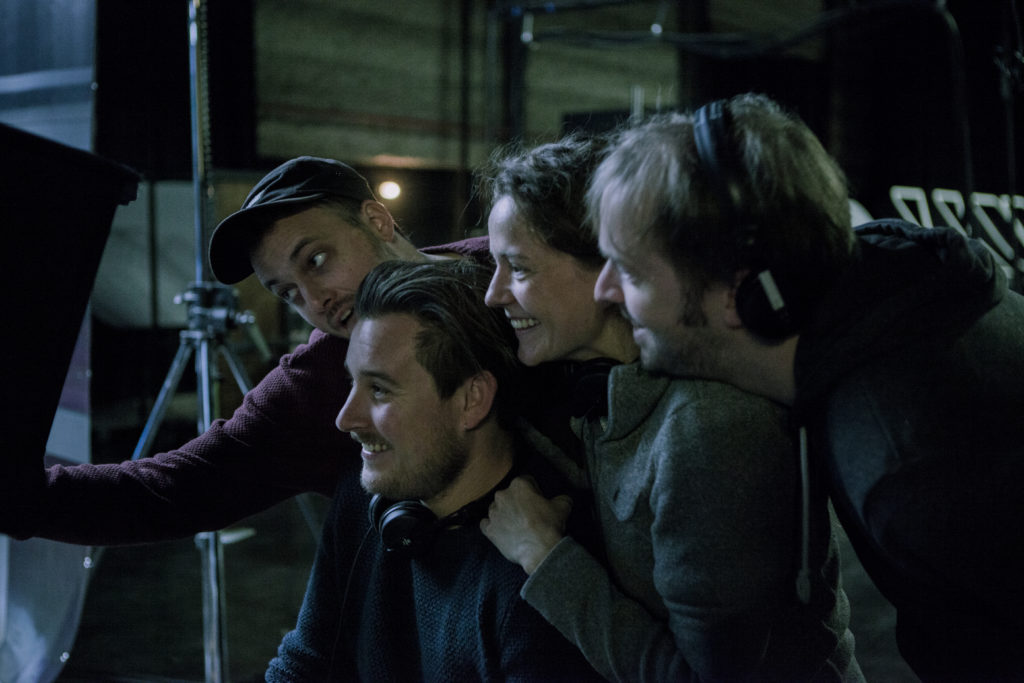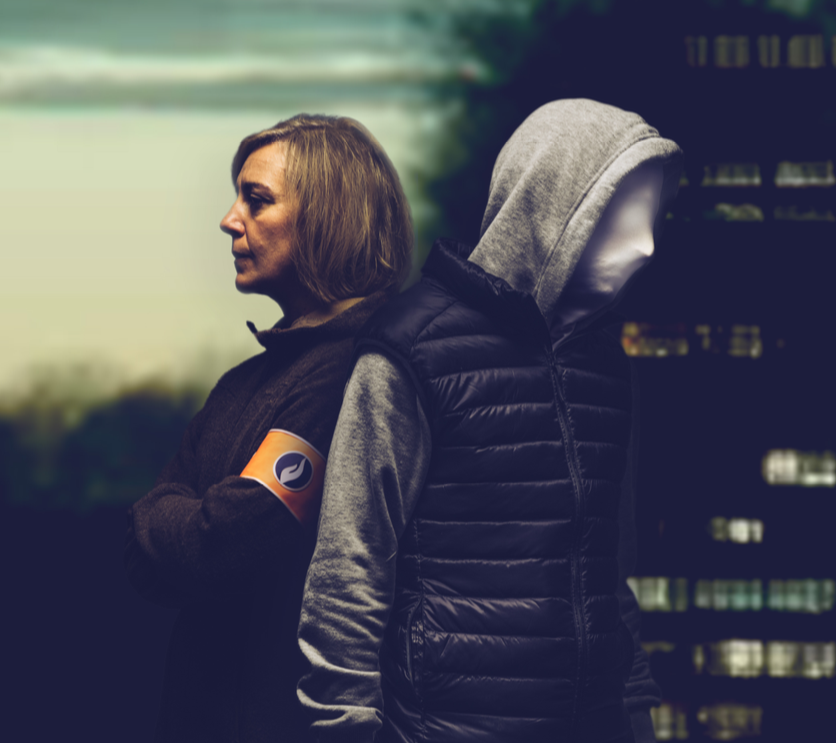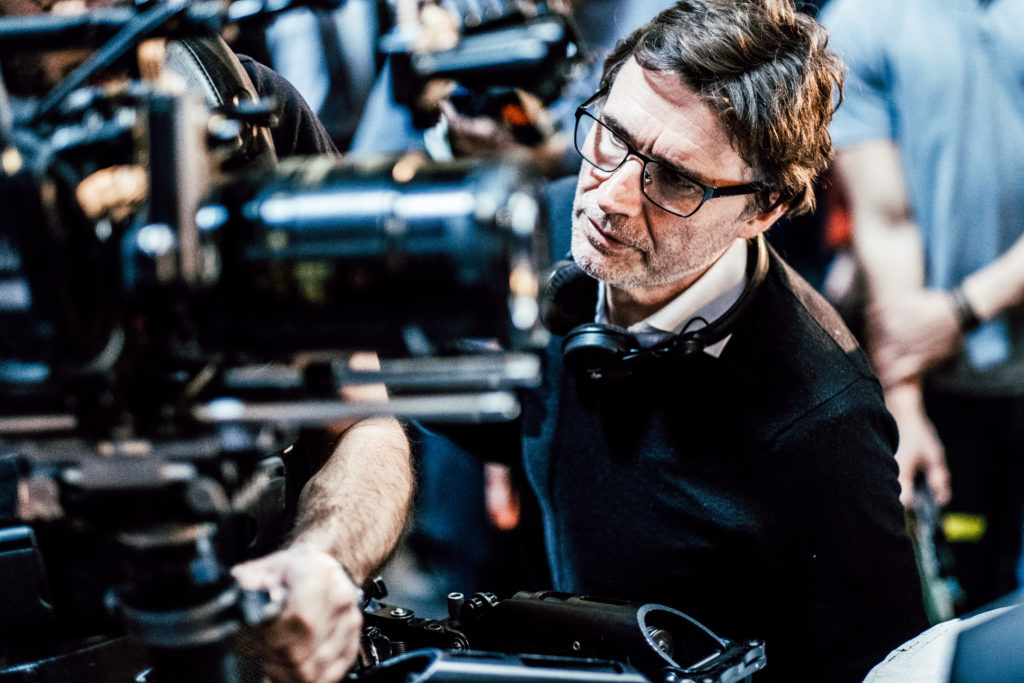
When were the seeds of The Day sown?
Mahieu: We first came up with some ideas – mainly as to concept and structure – ten years ago. We picked up the thread and discussed them in more detail eight years ago. That’s when we had our arena: a hostage taking in a bank. Six years ago, we left on a gap year with the vague intention of working on the project, if and when we felt like it. We did feel like it and came back with two instalments; which have gone through endless rewrites.
Do you have an approximate idea of how many hours you spent writing The Day?Geirnaert: I tried to work that out at some point and counted 7,500 each – that’s for the scripts only, and probably an underestimation. A huge one.
Why a hostage taking?
Geirnaert: Julie likes that kind of films and TV series. I have no particular affinity with hostage takings, but do like a good crime series with an original angle. The format came to us first. We wanted to tell a story that takes place over the course of one day, told from various perspectives. We definitely didn’t want a mosaic storyline, like you find in arthouse films. That’s been done before. What we had in mind was a suspenseful thriller that uses dual narrative to its full potential. A hostage situation seemed the perfect tool for this, since it involves serious threat levels and suspense from the first minute to the last. Those inside don’t know what’s going on outside, and vice versa. Two different points of view right from the start.
There’s no shortage of crime series. This one stands out because of its structure and the various narrative perspectives. Can you tell us how The Day is structured or should the viewers work that out for themselves?
Geirnaert: The whole series takes place in one day – from the crack of dawn to late at night, and the viewers are shown the events twice. Once outside the bank, through the eyes of the police and press, another time from inside, from the point of view of the hostage takers and the victims.
Mahieu: A lot happens, but because we regularly change perspectives viewers have an interesting narrative experience. Just when you think you’ve sussed it out, we change perspectives and show things in a different light. We can’t wait to see how viewers will react. The victims’ story is quite emotional; that of the perps and the police is driven largely by suspense. Either way, the viewer will want to know what’s around the corner… in the next instalment.
When you watch The Day for the second time you realize how every little detail fits. Doesn’t such an ambitious structure demand lots of painstaking, minute work?
Mahieu: For us, as scriptwriters, The Day is much more complicated than a chronological series. Viewers should never feel the story is too contrived. We knew it would be hard to have both perspectives overlap, and keep things moving at the same time. Which it was. When you tell the same story twice, you have to keep it thrilling and fresh. We worked long and hard to perfect that. But because it was such a massive challenge, we also hugely enjoyed doing it.
Geirnaert: We spent lots of time painstakingly completing the jigsaw puzzle. Everything had to be just right: the overlaps, the chronology, the structure… It sometimes did feel like riding a bike while applying the brakes, though. Even when the vibe is right and it all comes flowing out, you still have to make sure your idea matches the timeline. The tiniest change can have huge consequences for other instalments.
‘The Day should be more than just entertainment’, says Gilles Coulier (Bevergem, Cargo), one of your two directors. There’s nothing wrong with an action series, is there?
Mahieu: Our goal was to make a suspensful series which pulls the viewers along and challenges them to think. But we also wanted to go deeper than that. Viewers should be truly moved by the characters’ stories. The Day contains plenty of action, but no Hollywood OTT situations or gratuitous violence.
Geirnaert: The series revolves around the characters, also the police ones. But we did make a point of steering clear of the super cop who stops at nothing to solve a case all on his own. It’s a tired old recipe, and I don’t even like those series. They turn cops into super humans. I like to show my characters warts and all, complete with their uncertainties.

Did you have the last word? Are you the showrunners too, on top of being the scriptwriters?
Geirnaert: Yes, although initially we had no idea what a showrunner does (laughs). They are still uncommon in Belgium. The Day is a ‘série d’auteur’, let’s say. It’s our baby.
Mahieu: It was a case of having a rapport with the content, rather than about desperately wanting to have the last word. We did discuss things on set, but our main job was to make sure everything fell into place. Since we virtually knew the script by heart, we could make sure there were no overlaps and mistakes. If the directors wanted to move away from the script, we could immediately say whether it fitted the bigger picture or not.
As directors, Gilles Coulier and Dries Vos tend to leave their mark on what they make.
Geirnaert: Absolutely, and that’s exactly why we were eager to work with them. It keeps you on your toes and makes for a much better end product. We started working very closely with Gilles and Dries at an early stage, and later on also with the two cinematographers. Various visual references were put on the table, and it soon became clear that we were all on the same page.
Mahieu: The same goes for the castings. All final decisions were taken together. On set, however, you have to give the directors enough leeway to let them do their job, since that’s their strength. The deal is: we make suggestions but on set the director has the last word.
You’ve assembled a cast to die for. Who do you consider the series’ revelation?Geirnaert: The series has an ensemble cast, so no protagonist, antagonist or supporting characters. We did, at one point, fear we were introducing too many characters but the try-outs proved us wrong. Emotionally, I think Sofie Decleir will be the face of the series. She’s excellent. It’s the first time she plays such a prominent role. It’s a great bonus, for us, to be able to help the viewers ‘discover’ her like that.
‘We’ve got none of that stuff here. This is not Hollywood’, one of the police people says. Did you want to paint a factual picture or can fiction do whatever it likes, to build suspense?
Mahieu: The characters, their personality and the situation are totally fictitious. But we did do our research. We talked at length with negotiators, local police, detectives, victim support, behavioural scientists, the author of a book about hostage situations. We listened to them and confronted them with fictitious situations. Those chats proved very productive indeed.
Geirnaert: I’m a firm believer in doing your homework. You have to know about the reality before you can decide where to keep in step, or deviate from it. Our chats taught us, for example, that negotiators extend a friendly greeting to hostage takers when they speak for the first time. No threats or intimidation – those are Hollywood clichés.If a hostage taker blows his top and loses it, negotiators occasionally do put down the receiver and ask them to ring back when they’ve calmed down. I’d never have imagined that myself. But it’s still fiction: we try to stay close to reality, as long as it’s workable.
Mahieu: Exactly. No negotiation bus is as smart as ours. Chances are it will have twice as many people in it too (laughs).




